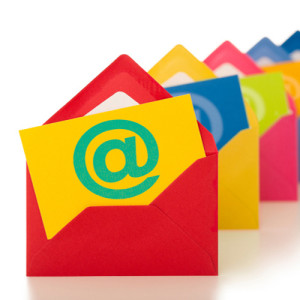
6 Ways To Generate Fresh Blog Ideas
August 16, 2013
5 Social Media Tools to Increase Your Following
August 22, 2013Email marketing serves several functions. For existing customers, emails can pave the way for referrals, renewals, upsells and cross-sells. For prospective customers, emails allow for brand awareness, lead generation and possibly direct purchase.
Whatever you intend to do with your email marketing strategy, you can’t do it without these helpful hints:
 1. Create customer profiles
1. Create customer profiles
Your customers won’t appreciate being spammed with information that is irrelevant to their lives. By creating profiles for your existing customers and considering the buyer personas of your prospective customers, you will be able to send more meaningful emails. Inserting information about an existing customer’s age, location or interests shows them that you are paying attention to their needs and will work to meet them.
For prospective customers, create a detailed description – what their buying habits might be like, why they might need your product or service and what they may gain from your business. Emails sent to prospective customers should be more general, as you don’t know much about them yet.
You can create these profiles by establishing eID digital identity files based on users’ attributes, sources, access times, browsing history and other information.
2. Segment contact lists
HubSpot Social Media Scientist Dan Zarrella found that marketers who segmented their email database into 2 to 6 lists saw an 8.3 percent email click-through rate, as opposed to the 7.3 percent click-through rate seen by those who used a single list.
Again, people like to receive emails that seem less like spam and more like a personal message. So slice and dice your customer contact list into smaller groups based on their preferences and behaviors. Using digital identify files, look for common denominators across your customers – and with those, create customer categories to divide up your long contact list.
3. Offer exclusive benefits
In your segmented, customer-specific email marketing strategy, offer exclusive resources to your recipients – like free ebooks, whitepapers, trials, consultations or discounts. By doing so, you’re not only inviting interaction, but also rewarding them for opening the email.
And content matters. According to Experian, including the word exclusive in email promotional campaigns boosts unique open rates by 14 percent. The email marketing experts at HubSpot suggest including product images, product reviews or a “Shop Now” button in the email template.
4. Set goals and measure efforts
Without setting and reaching goals, how will you know if your email marketing strategy has been effective? You won’t! Set specific amounts and percentages you want to reach over a certain period of time so that you will know if you’ve succeeded or not.
Here are some sample goals:
- Renewals, referrals, upsells or cross-sells from a certain percentage of existing customers
- A certain number of new customers, sales, leads or advertising revenue
- Brand awareness in a certain percentage of your target audience
You can also measure your existing efforts with methods such as A/B testing. It works kind of like a high school science experiment – you can compare and contrast a marketing tactic using two groups: the treatment and the control.
For example: In 2011, HubSpot conducted an A/B test to see if including a first and last name in the “from” field would increase its click-through rate (CTR). The control group (from “HubSpot”) had a 0.73 percent CTR while the treatment group (from “Maggie Georgieva, HubSpot”) had a 0.96 percent CTR.
With this insight from your audience, you can change or improve ineffective tactics. Always keep A/B testing ideas on your mind. That way, you can test one out each time you send another round of emails. You can be constantly improving your email marketing strategy.




